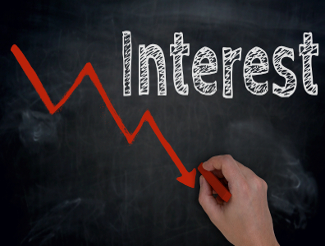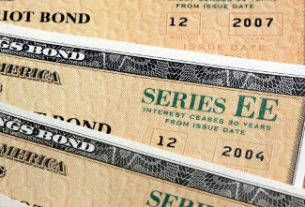The past decade has seen interest rates at historically low levels for the longest period of time ever. The effect that has had on the economy has been enormous, with governments, corporations, and households all taking on massive amounts of debt in order to take advantage of low borrowing costs. But despite interest rates being so low, economic performance has been subpar.
The economic recovery in both the United States and Europe has been one of the weakest in history. In response to that, central bankers want to push interest rate even lower than they are now, into negative territory. The European Central Bank, Bank of Japan, and Swiss National Bank have already done that, pushing their overnight lending rates into shallow negative territory. The Federal Reserve stands nearly alone among world central banks in respecting the zero lower bound. But will that hold up in the event of another financial crisis?
Now that other central banks have pushed their interest rates below zero, the Fed thinks that it has all the evidence it needs to at least think about doing the same thing. But pushing interest rates into negative territory will have dire consequences not just for the economy, but for individual savers and investors.
Reduces Yield of Investments
One of the primary consequences of lower interest rates is reduced yield on investments. When bond yields drop, yields on many other linked investment products drop as well. That leaves investors desperate for yield.
The first few years after the financial crisis saw investors grasping at just about anything, looking for a growth opportunity. Were we to return to an era of near-zero or negative interest rates, investors would similarly be starved of investment opportunities with decent yields.
Eats Into Savings
Another negative consequence of negative interest rates is that they would eat into investors’ savings. Many investors realize that real returns on savings accounts are negative and have been negative for decades. But having nominally negative returns on savings accounts would make that clear to ordinary investors, not just the most sophisticated.
So far only a few banks in Europe have gone so far as to pass negative interest rates on to their customers, and then only to large depositors. But if negative interest rates become more widespread, and especially if they get driven down to -1%, -2%, or lower, expect banks to pass on those costs to depositors. That “free” bank account you have right now might end up costing you dearly in the future.
Destroys Investment Value of Bonds
There are already over $17 trillion worth of negative-yielding bonds in the world right now. Yes, that’s trillion with a “T”. And that sum will only increase as interest rates continue to decrease around the world.
Those negative-yielding bonds are really only of benefit to institutional investors who are required by law or statute to invest in certain amounts of high-grade debt. They can tolerate the minor losses for a while. But ordinary investors who are looking to shore up their investment portfolios can’t afford to take those losses.
Many investors are counseled to increase their investments in bonds and decrease their investments in stocks as they get older in order to de-risk their investment portfolios. But de-risking is done in order to minimize the possibility of losing money. When bond yields go negative then bonds are a guaranteed investment loss, making them a riskier asset rather than a de-risking asset. That in turn will drive down bond demand from ordinary investors and harm investors nearing retirement by forcing them into riskier investment assets.
Weakens the Dollar
Negative interest rates in the US will also weaken the dollar. The way that the Federal Reserve pushes interest rates lower is by creating more money out of thin air to spend into the financial system. In order to push interest rates negative it would have to produce a significant amount of new money, thus further devaluing and debasing an already watered down dollar.
Negative Interest Rates Are Contractionary in the End
While central banks have pursued negative interest rates as a form of expansionary monetary policy, encouraging spending money rather than saving and investing, ultimately negative interest rates become contractionary. At some point depositors realize that the costs of negative interest rates are higher than the benefits of keeping money deposited.
Once that realization hits, money begins to be pulled out of the banking system. Since the fractional reserve banking system consists of trillions of dollars of bank deposits pyramided on top of a small base of cash, pulling out even a small fraction of money from the banking system risks the possibility of systemic instability and a full crash of the banking and financial system.
When would that occur? No one knows. There have been studies that estimate how low negative interest rates would have to go to become contractionary, but no one knows for sure. And the consequences of accidentally pushing rates so low to cause that contraction could completely destroy the banking system.
But that doesn’t mean that that won’t happen. Central bankers are known for their hubris, overconfident that they can manage the economy through their policies. Wrecking entire nations through monetary policy has happened numerous times over the course of history, and it could easily happen again.
Investors need to be aware of these dangers and take steps to protect themselves against what seems like an all but inevitable push towards negative interest rates. Unless they invest in gold or other assets that can hedge against the wealth-destroying effects of negative interest rates, they will remain at the mercy of the Federal Reserve and other central bankers who are determined to foist their negative interest rate experiments on the financial system.
This article was originally posted on Goldco.





